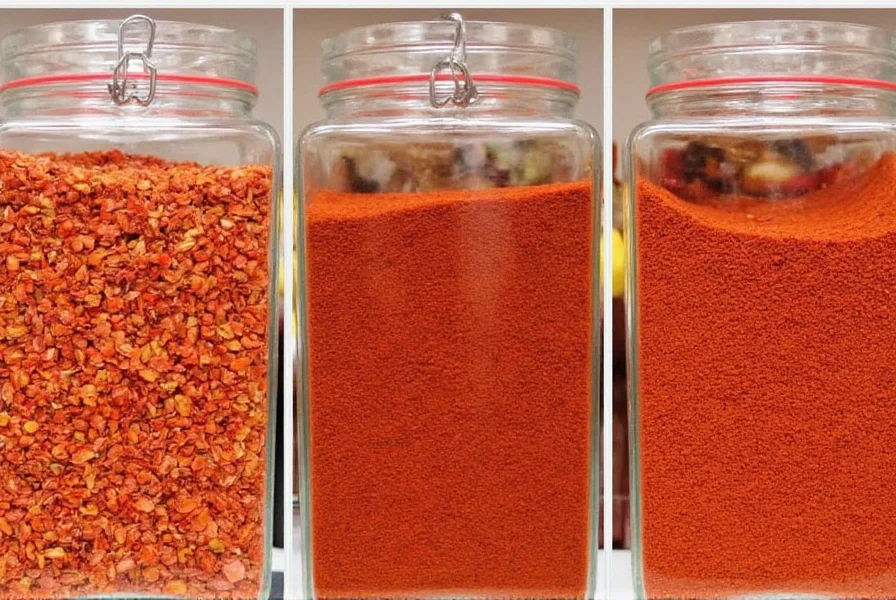"Red pepper paper" is not a standard culinary product or term. Most searchers are likely confusing it with red pepper flakes packaging, Korean gochugaru (red pepper flakes), or mistakenly combining terms like "red paper" and "pepper." Authentic red pepper products come in glass jars or airtight containers—not paper—as moisture protection is critical for preserving flavor and potency.
When home cooks and food enthusiasts search for "red pepper paper," they're typically encountering a terminology mix-up. This confusion often stems from mishearing product names, mistranslations, or unclear packaging descriptions. Understanding what actually exists in the culinary world can prevent wasted time and ensure you get the right ingredients for your recipes.
Why "Red Pepper Paper" Doesn't Exist as a Standard Product
True red pepper products—whether crushed flakes, powders, or pastes—require moisture-resistant packaging. Paper would compromise quality through:
- Moisture absorption - Reducing shelf life and causing clumping
- Oil seepage - Capsaicin oils would stain and weaken paper
- Flavor degradation - Exposure to air accelerates potency loss
Commercial producers use glass jars, metal tins, or specialized plastic containers with oxygen barriers. Even single-use seasoning packets employ metallized film—not paper—to maintain freshness.
| Product Type | Standard Packaging | Why Paper Isn't Used |
|---|---|---|
| Red pepper flakes | Glass jars with tight seals | Prevents moisture absorption and oil leakage |
| Gochugaru (Korean) | Multi-layer foil bags | Blocks light and oxygen to preserve vibrant color |
| Paprika | Dark glass containers | Protects from light degradation of delicate compounds |
Common Sources of Confusion
Three primary misunderstandings lead to "red pepper paper" searches:
1. Misheard Product Names
"Red pepper flakes" can sound like "red pepper papers" in casual conversation, especially when:
- Hearing instructions in noisy kitchen environments
- Non-native English speakers interpreting culinary terms
- Autocorrect errors transforming "flakes" to "papers"
2. Translation Issues
In Korean cuisine, gochugaru (고춧가루) refers to fine red pepper powder. Some mistranslations describe its texture as "paper-fine," creating confusion. Authentic Korean markets never sell this in paper packaging due to its high moisture content.
3. Craft Product Mix-Ups
"Pepper paper" exists in art contexts as transfer paper for designs, sometimes colored red. This non-culinary product occasionally appears in search results, misleading cooking enthusiasts.

What to Look for When Buying Red Pepper Products
Whether you need Italian-style crushed red pepper or Korean gochugaru, proper identification ensures culinary success:
Label Verification Checklist
- Primary ingredient - Should list only "dried red peppers" or "capsicum"
- Color indicators - Vibrant red (not brownish) signals freshness
- Texture descriptors - "Coarse flakes," "fine powder," or "sweet/hot" varieties
- Origin information - Korean gochugaru will specify "taeyangcho" peppers
Avoid These Red Flags
- Paper or thin plastic bags without moisture barriers
- Products labeled "red pepper paper" (marketing gimmick)
- Missing harvest or packaging dates
- Unnaturally uniform color (may indicate additives)
Proper Storage for Maximum Freshness
Once you've purchased authentic red pepper products, maintain potency with these storage techniques:
| Product Type | Room Temperature | Refrigerated | Best Container |
|---|---|---|---|
| Crushed red pepper | 3-6 months | 12+ months | Dark glass with tight seal |
| Gochugaru | 2-3 months | 6-8 months | Vacuum-sealed foil pouch |
| Paprika | 6-12 months | 18+ months | Amber glass container |
Always store away from heat sources and direct light. For long-term storage, divide into small portions to minimize air exposure when opening. Never store red pepper products above the stove—heat rapidly degrades capsaicin and volatile oils.

Authentic Culinary Applications
Understanding how to use genuine red pepper products elevates your cooking:
Italian-Style Crushed Red Pepper
Add during the last 2 minutes of cooking to preserve heat and flavor. Ideal for:
- Finishing pasta dishes like arrabbiata
- Infusing olive oil for bread dipping
- Adding dimension to tomato-based sauces
Korean Gochugaru
This comes in two varieties—coarse for kimchi, fine for sauces. Key uses:
- Kimchi fermentation (coarse grind)
- Bibimbap sauce base (fine grind)
- Marinating meats for gochujang-based dishes
Regional Variations to Know
Not all red pepper products are interchangeable. Key differences:
- Calabrian - Fruity with moderate heat (30,000 SHU)
- Aleppo - Mild, slightly sour (10,000 SHU)
- Korean - Sweet-heat balance (4,000-8,000 SHU)
- Thai - Intense heat (50,000-100,000 SHU)
Where to Find Quality Products
For authentic red pepper products, seek these sources:
- Korean markets for genuine gochugaru (look for "sun-dried" labels)
- Specialty spice shops with frequent inventory turnover
- Reputable online retailers with harvest date information
- Local farmers markets with dried pepper vendors
Avoid generic supermarket brands that blend multiple pepper varieties. Premium products specify the pepper type (like "Hungarian wax" or "Korean cheongyang") and include harvest dates—critical indicators of freshness.










 浙公网安备
33010002000092号
浙公网安备
33010002000092号 浙B2-20120091-4
浙B2-20120091-4